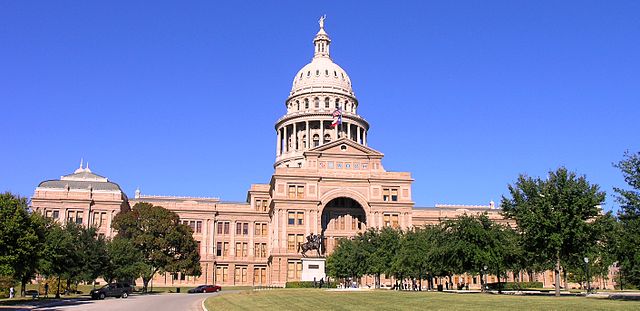
Last week, both chambers of the Texas Legislature each presented their proposals for how they plan to alleviate property tax burdens for Texans. This has been something that both the Governor, Lt. Governor, and now the Speaker of the House have addressed as top priorities this legislative session. Both chambers set aside 15 billion for property tax cuts in their preliminary budgets, and want to lower school district M&O rates by 10 cents.
Senate Bill 3 and Senate Joint Resolution 3, filed by Texas State Senator Paul Bettencourt, if passed, would increase the state’s Homestead Exemption Act from $40,000 to $70,000. This plan is only estimated to cost 3.5 billion, and the rest planned to alleviate property taxes could be used to lower school M&O rates. The Senate’s proposal is supported by all 31 members of the Texas senate. However, this would only affect homeowners.
In the Texas House, House Speaker Dade Phelan proposed House Bill 2 and House Joint Resolution 1, written by State Representative Morgan Myers, to alleviate Texans’ property taxes in a different way.
House Bill 2 would reduce the state’s appraisal cap from 10% to 5%. And it would extend not only to residential property but commercial properties as well. Additionally, HB 2 wants to reduce the school district tax rate by $ 0.15. House Speaker Dade Phelan has expressed he is open to adding the Senate’s Homestead Exemption raise atop the House’s proposal.
Both proposals from each chamber promise savings from property taxes. Yet, Lt. Governor Dan Patrick is opposed to what the House Speaker is trying to accomplish. Patrick says that lowering the appraisal cap would have negative effects on Texans. What headlines are focusing on and critiquing is the bill’s desire to reduce the appraisal cap from 10% to 5%. Not everyone is a big fan of appraisal caps, and believe lowering the appraisal cap more will lead to inequities and disrupt the housing market.
According to the Texas Tribune, “Tax experts and real estate industry analysts warn that lowering the appraisal cap would have severe ripple effects, like creating vast inequities in who pays property taxes and upending the state’s housing market.” Furthermore, it is speculated that other local tax rates and city fees would increase to make up for any losses.
Currently, a Texas homeowners’ taxable value (appraisal) is capped at rising 10% every year. In 1997, Texans voted that their homes would not have a taxable value that grows more than 10% every year. So while the market value of the home can grow however it will, a homeowner’s taxable value of the home can grow no more than 10% every year.
At first, we think that not allowing the taxable value of a residential property to rise no more than 5% is great because homeowners pay less in property taxes. Well, yes, but there definitely will be side effects, and not everyone would feel the benefits over time.
Appraisal caps are great for homeowners living in the same house for a long period of time. Their appraisal only rises 10% each year. But for new homeowners, or if one is buying a new house, their tax value starts at the current market value as of Jan. 1st of that year.
Thus, reducing the spending cap might incentivize people to stay in their current homes and enjoy the tax break. This might also disincentivize people from buying new homes. When fewer people are moving and buying homes, that might cause the housing market to get a little unstable.
Critics of lowering the appraisal cap point to similar measures that were taken in California in the 1970s. California’s Proposition 13 reduced California’s appraisal cap to 1%. The Center for Public Policy Priorities wrote a page in 2005 to explain what would happen if Texas lowered the appraisal cap and gave an example from California’s Proposition 13: “Warren Buffet, one of the world’s richest men, has pointed out the consequences of a value cap, such as California’s famous Proposition 13. His home in Omaha, Nebraska, which is worth $500,000, has a tax bill of $14,410. His $4 million house in Laguna Beach, California, which is subject to Proposition 13’s value caps (at 1%), is taxed at $2,264. But if Buffet were to sell his beach house, the new owner would face $40,000 a year in property taxes.”
Additionally, there will be inequity amongst homeowners who benefit from this. The majority of benefits a lower appraisal cap offers would go to wealthy homes and wealthy homeowners. Someone with a wealthier home is more likely to have their market value rise more rapidly and higher than someone with a lower or middle-valued home that does not typically rise in market value rapidly or as high. Thus, the people who really feel the tax break from lower appraisals are higher-income homeowners with wealthier homes.
Second, if appraisal caps are extended to commercial property, then those tax burdens might fall on newer or less volatile businesses.
Another critique made against lowering the appraisal cap is that the local and state governments will have to make up for that loss of funding. Appraisal caps prevent local governments from raising revenues. When there are tax breaks such as this, a question remains as to how the local government and the state will make up those funds. Ideas speculate higher sales taxes or higher city fees such as sanitation and water would be a consequence.